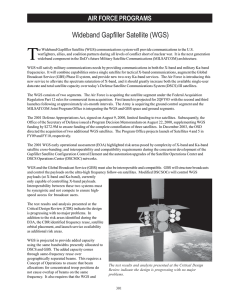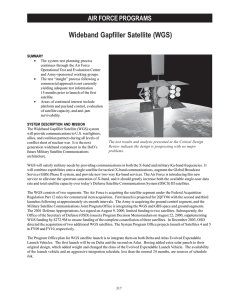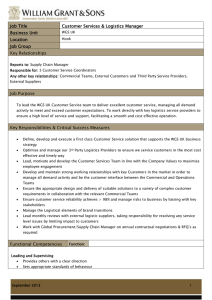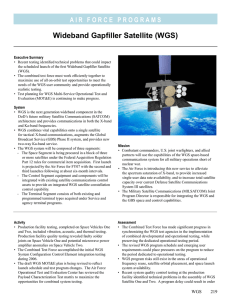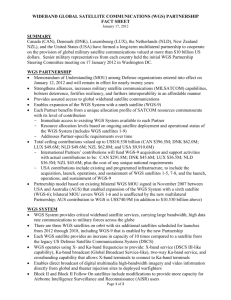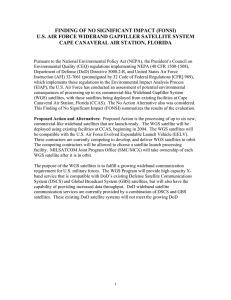Wideband Global SATCOM (WGS)
advertisement
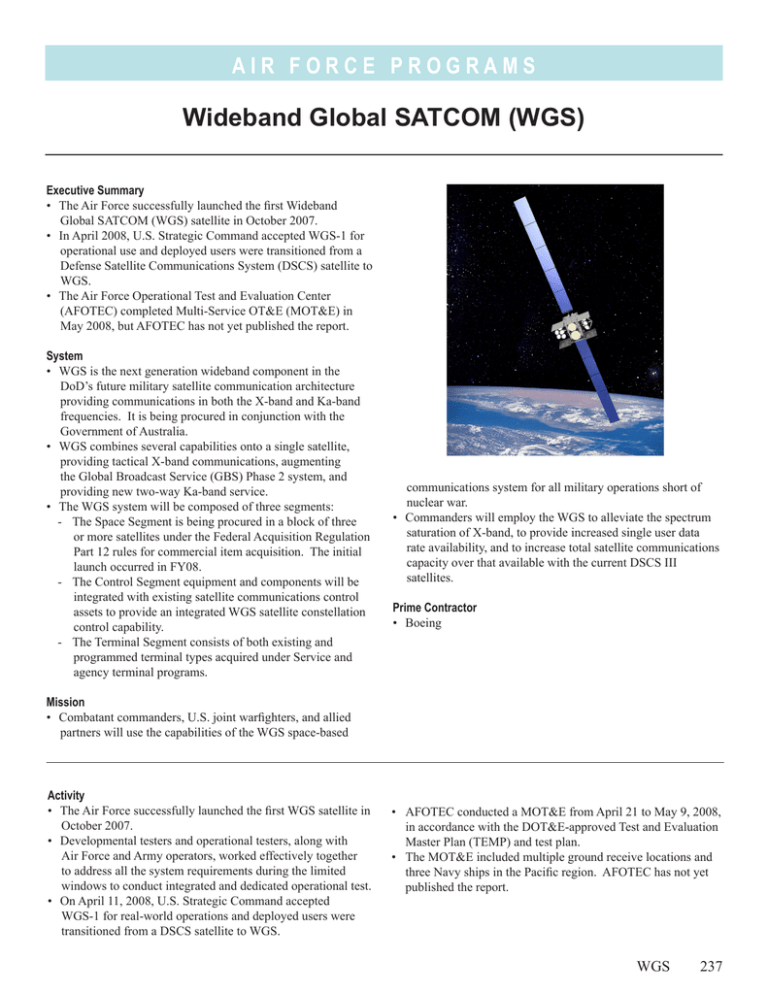
A i r F o r c e P RO G R A M S Wideband Global SATCOM (WGS) Executive Summary • The Air Force successfully launched the first Wideband Global SATCOM (WGS) satellite in October 2007. • In April 2008, U.S. Strategic Command accepted WGS-1 for operational use and deployed users were transitioned from a Defense Satellite Communications System (DSCS) satellite to WGS. • The Air Force Operational Test and Evaluation Center (AFOTEC) completed Multi-Service OT&E (MOT&E) in May 2008, but AFOTEC has not yet published the report. System • WGS is the next generation wideband component in the DoD’s future military satellite communication architecture providing communications in both the X-band and Ka-band frequencies. It is being procured in conjunction with the Government of Australia. • WGS combines several capabilities onto a single satellite, providing tactical X-band communications, augmenting the Global Broadcast Service (GBS) Phase 2 system, and providing new two-way Ka-band service. • The WGS system will be composed of three segments: - The Space Segment is being procured in a block of three or more satellites under the Federal Acquisition Regulation Part 12 rules for commercial item acquisition. The initial launch occurred in FY08. - The Control Segment equipment and components will be integrated with existing satellite communications control assets to provide an integrated WGS satellite constellation control capability. - The Terminal Segment consists of both existing and programmed terminal types acquired under Service and agency terminal programs. communications system for all military operations short of nuclear war. • Commanders will employ the WGS to alleviate the spectrum saturation of X-band, to provide increased single user data rate availability, and to increase total satellite communications capacity over that available with the current DSCS III satellites. Prime Contractor • Boeing Mission • Combatant commanders, U.S. joint warfighters, and allied partners will use the capabilities of the WGS space-based Activity • The Air Force successfully launched the first WGS satellite in October 2007. • Developmental testers and operational testers, along with Air Force and Army operators, worked effectively together to address all the system requirements during the limited windows to conduct integrated and dedicated operational test. • On April 11, 2008, U.S. Strategic Command accepted WGS-1 for real-world operations and deployed users were transitioned from a DSCS satellite to WGS. • AFOTEC conducted a MOT&E from April 21 to May 9, 2008, in accordance with the DOT&E-approved Test and Evaluation Master Plan (TEMP) and test plan. • The MOT&E included multiple ground receive locations and three Navy ships in the Pacific region. AFOTEC has not yet published the report. WGS 237 A i r F o r c e P RO G R A M S Assessment • MOT&E was adequate to determine that the WGS satellite is effective and suitable. However, testing identified areas of concern in Management and Control. • Based on operations with deployed users that transitioned from DSCS to WGS, users were able to effectively use the traditional DSCS X-band mission on WGS. • Based on observations and preliminary results from the OT&E, the WGS satellite appears to be working well. New capabilities, including Ka-band service and more efficient use of the frequency spectrum, offer a substantial increase in wideband satellite communication capacity. • Users could not effectively plan WGS communications using the Common Network Planning Software in its intended mode of operation during MOT&E. 238 WGS • Legacy baseband equipment, not part of the system under test, has inherent limitations that may preclude users from realizing the data rate potential offered by the WGS satellite. Recommendations • Status of Previous Recommendations. The Air Force addressed all previous recommendations. • FY08 Recommendation. 1. The Air Force should conduct a follow-up assessment to assure that shortcomings in Management and Control have been corrected.

